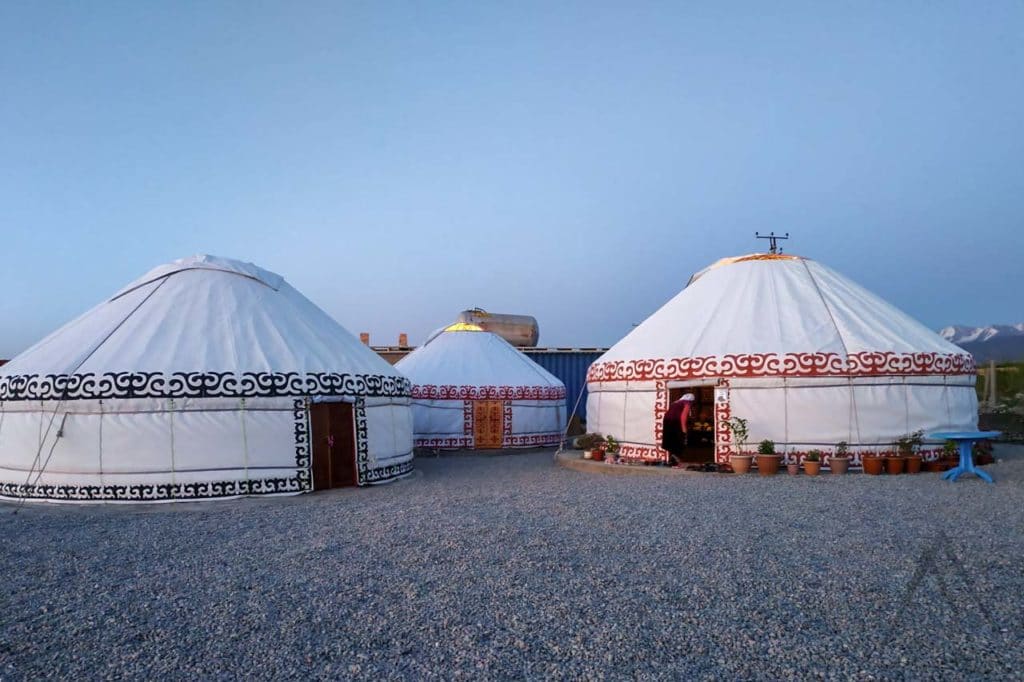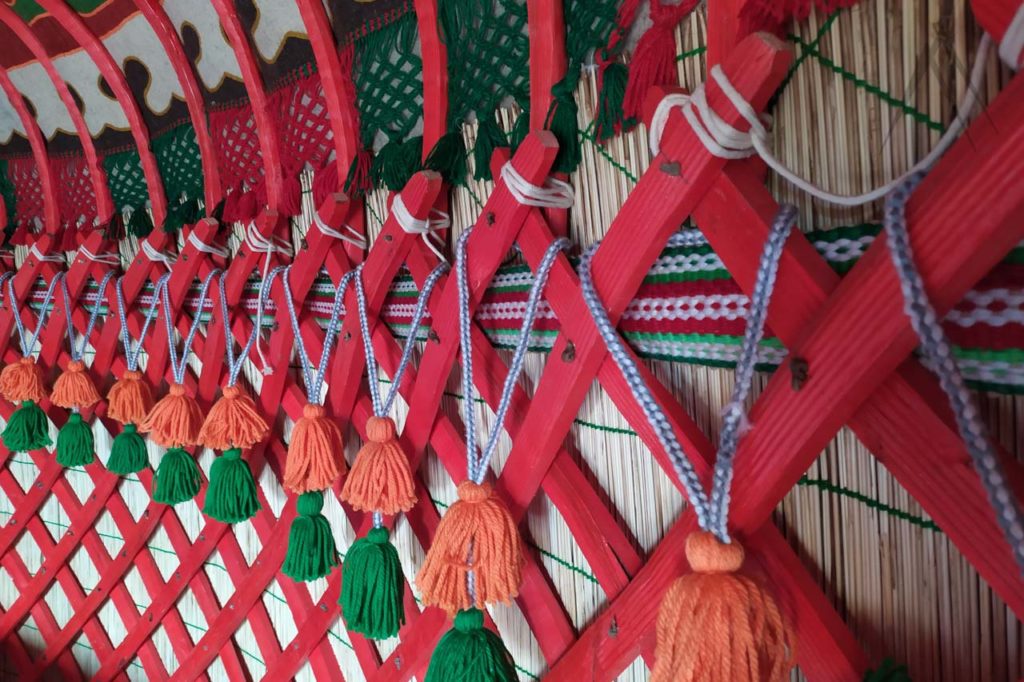Kazakh Yurt
Yurt culture in Kazakhstan
The yurt is an ancient dwelling of nomadic tribes, which is easy to assemble and disassemble for transport again within hours. The entire life of Kazakhs was once united with yurts as a symbol of Kazakhstan culture. The yurt is not just a dwelling, it is a representation of a special ideology, life without borders, life without restrictions, life in harmony with nature. The word “Yurt” originates from the word “Zhurt / Jurt” which means “people” or pasture, ancestral land. In the Kyrgyz and Kazakh languages, the word “Ata-Zhurt” means “Fatherland”, literally: “Father’s house”.


Kazakh Yurt Design
The installation of the yurt begins with the door “esik” which in the old days was usually faced towards east. People used to say: “The beauty and wealth of a yurt begin from the door. The design of the Kazakh yurt consists of three wooden parts: layers “kerege”, the base; poles “uyk”, forming a dome; and a round hoop “shanyrak”, which is the top of a yurt, acting as a ceiling window and the exit hole for smoke. Shanyrak was a family legacy, a symbol of the continuation of the family, and it is depicted on the Kazakhstan coat of arms. The united wooden mechanism is covered with felt, that provides the protection from wind, rain, snow, scorching sun and dust.
In terms of the functionality, the Kazakh yurt is divided into seven parts: 1) the place of honor “tor”, positioned opposite from the door, farthest away from the door, where you most likely will be positioned as a guest. 2) the place of the owner – a little closer to the entrance, to the left of the place of honor; 3) kitchen part – closer to the door from the place of the owner; 4) a place for young family members – to the right of the place of honor; 5) a place for storing horse gear – closer to the entrance from the place of young family members, also in the right half of the yurt; 6) the entrance part, the door 7) and finally hearth – in the center of the yurt.


Yurts in Kazakh Tourism
Today yurts serve as a home for the shepherds who take their livestock graze to the mountains, far from civilization. Otherwise they are mostly installed at the squares of Kazakh cities during the national holidays. Also the yurt technology is changing further away from the original. The base is replaced with metal and for the material of wall wrapping, synthetic materials are often chosen instead of the traditional felt. Traditional yurts still have their place especially in tourism, where visitors value the originality and ecology and this is how the centuries-old tradition continues to live. Kyrgyz Yurt culture is more alive and original compared to Kazakhstan.
Where to see yurts?
Page updated 28.1.2022